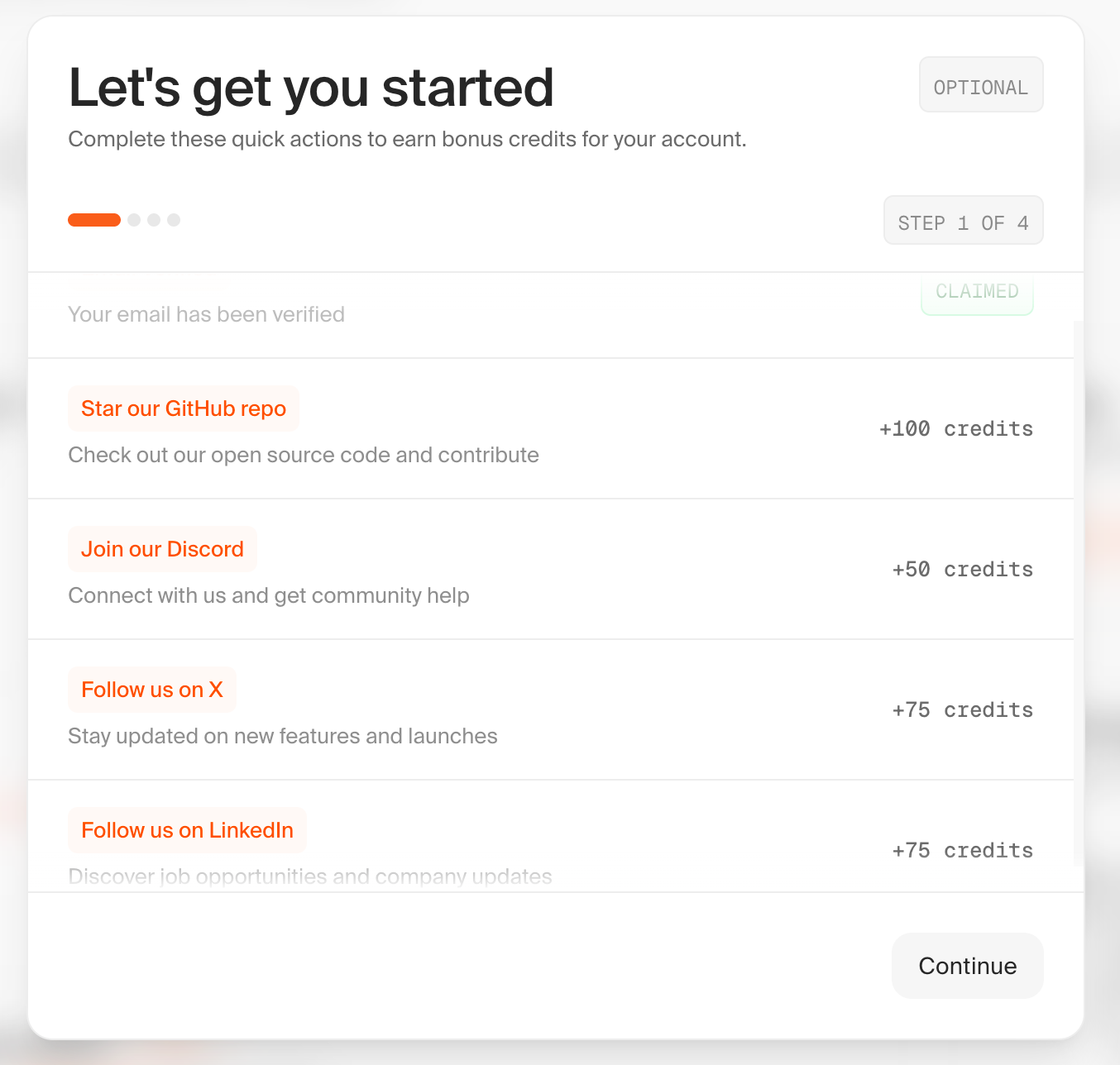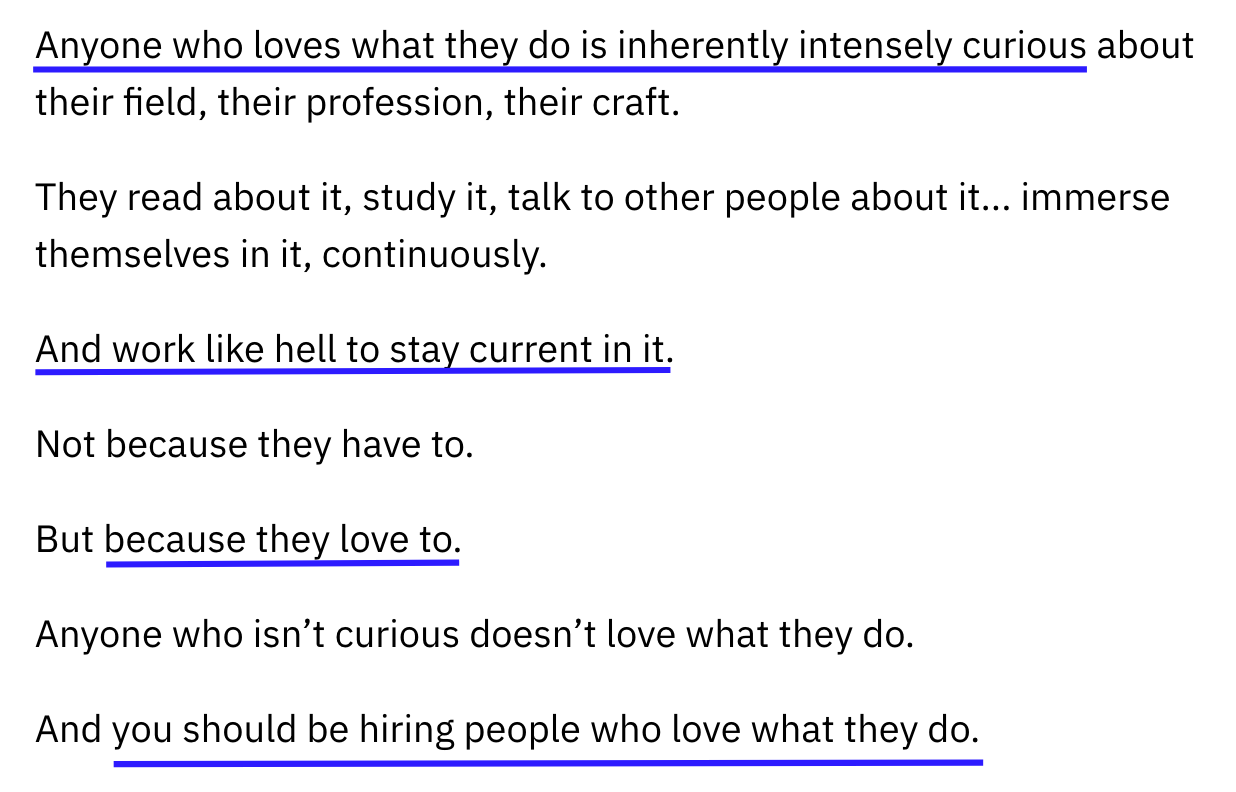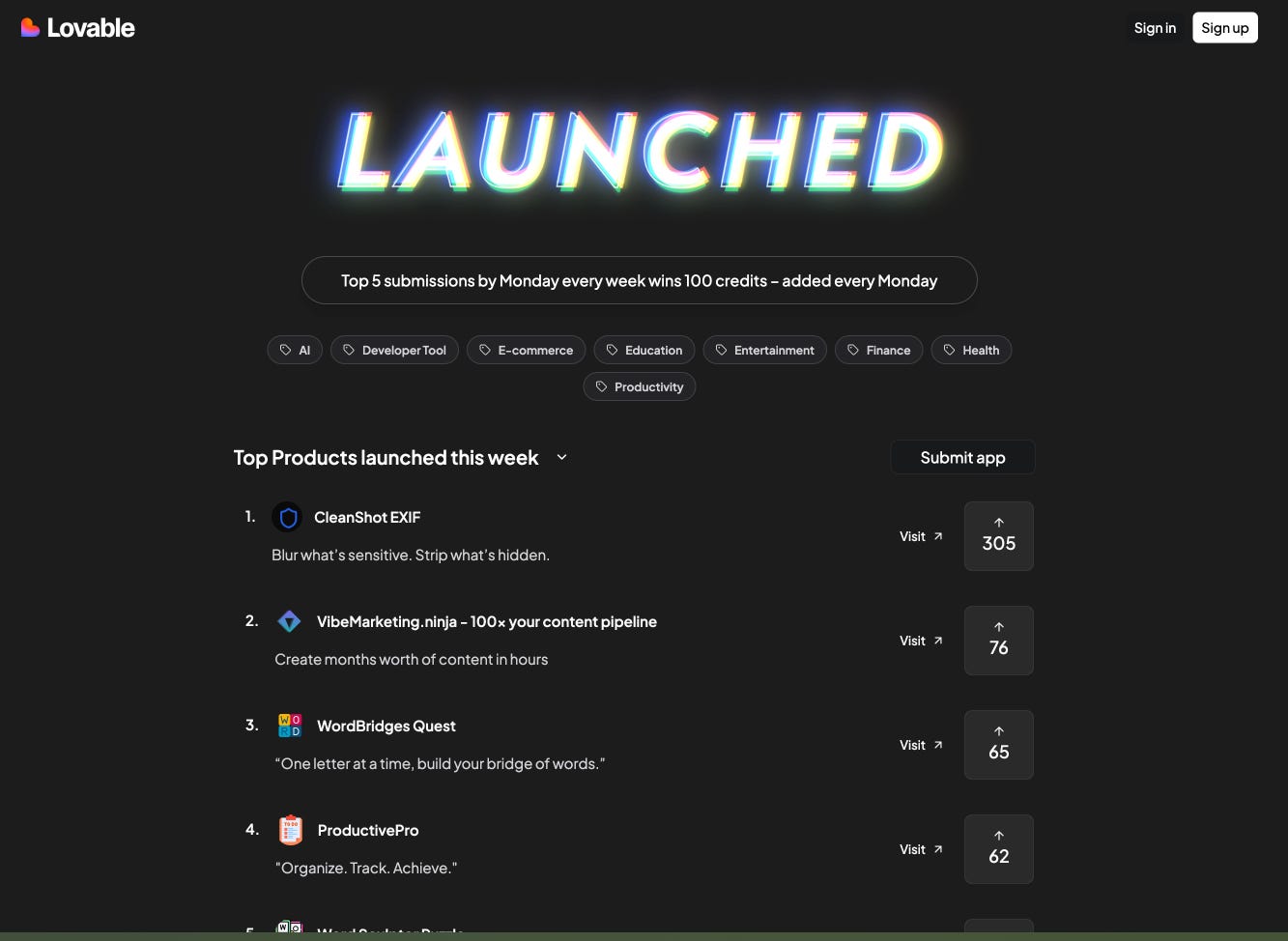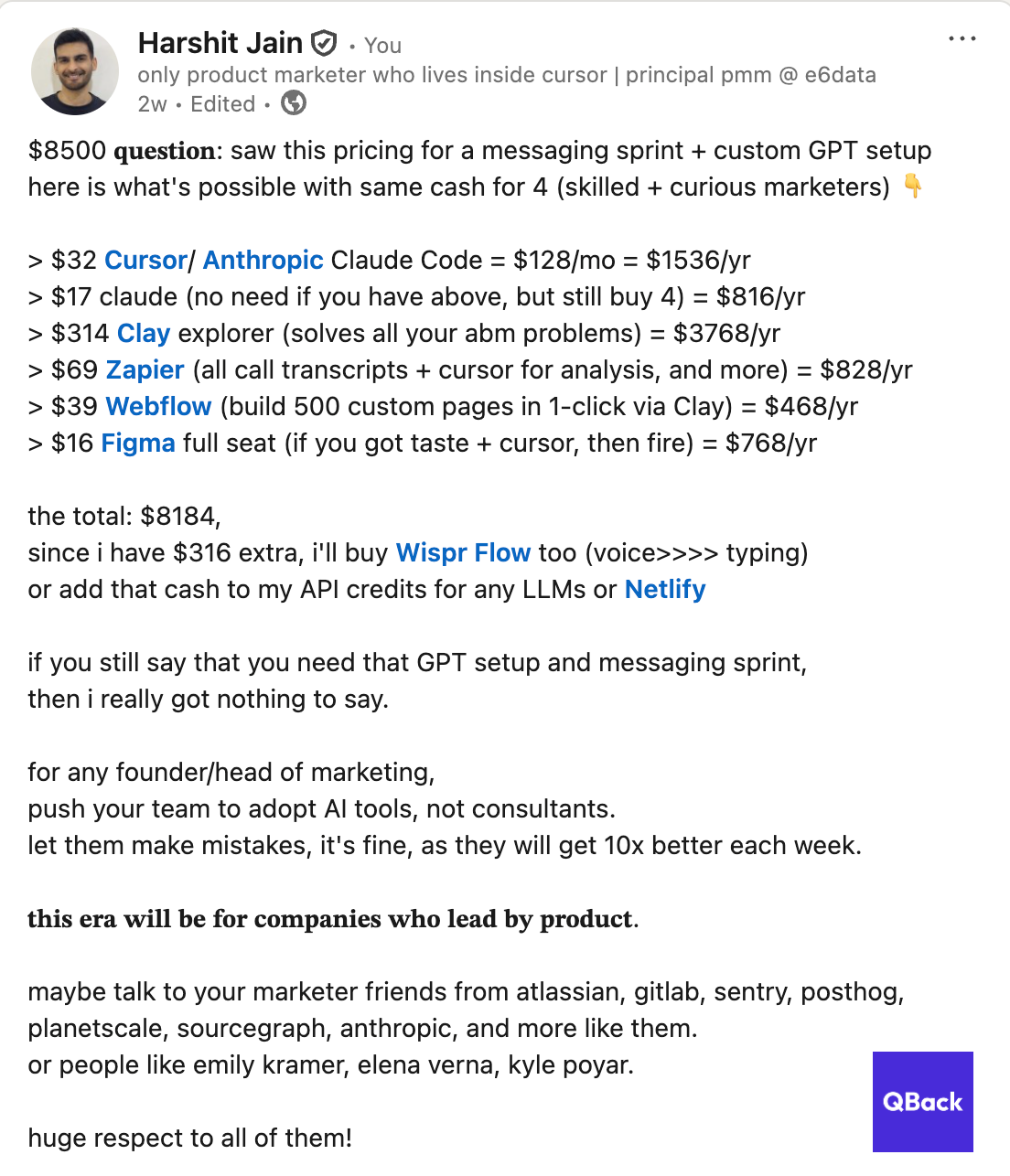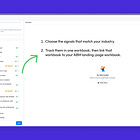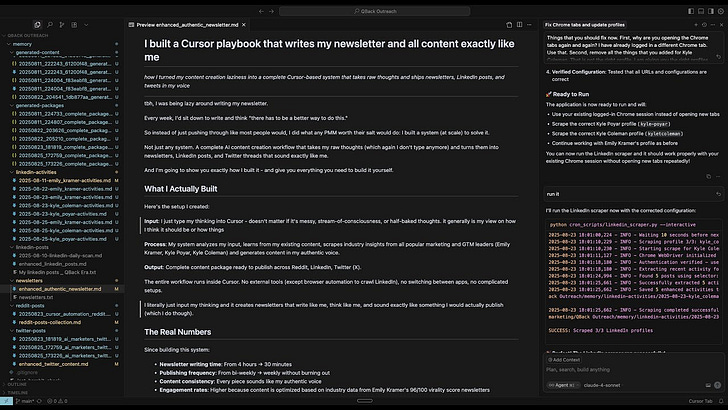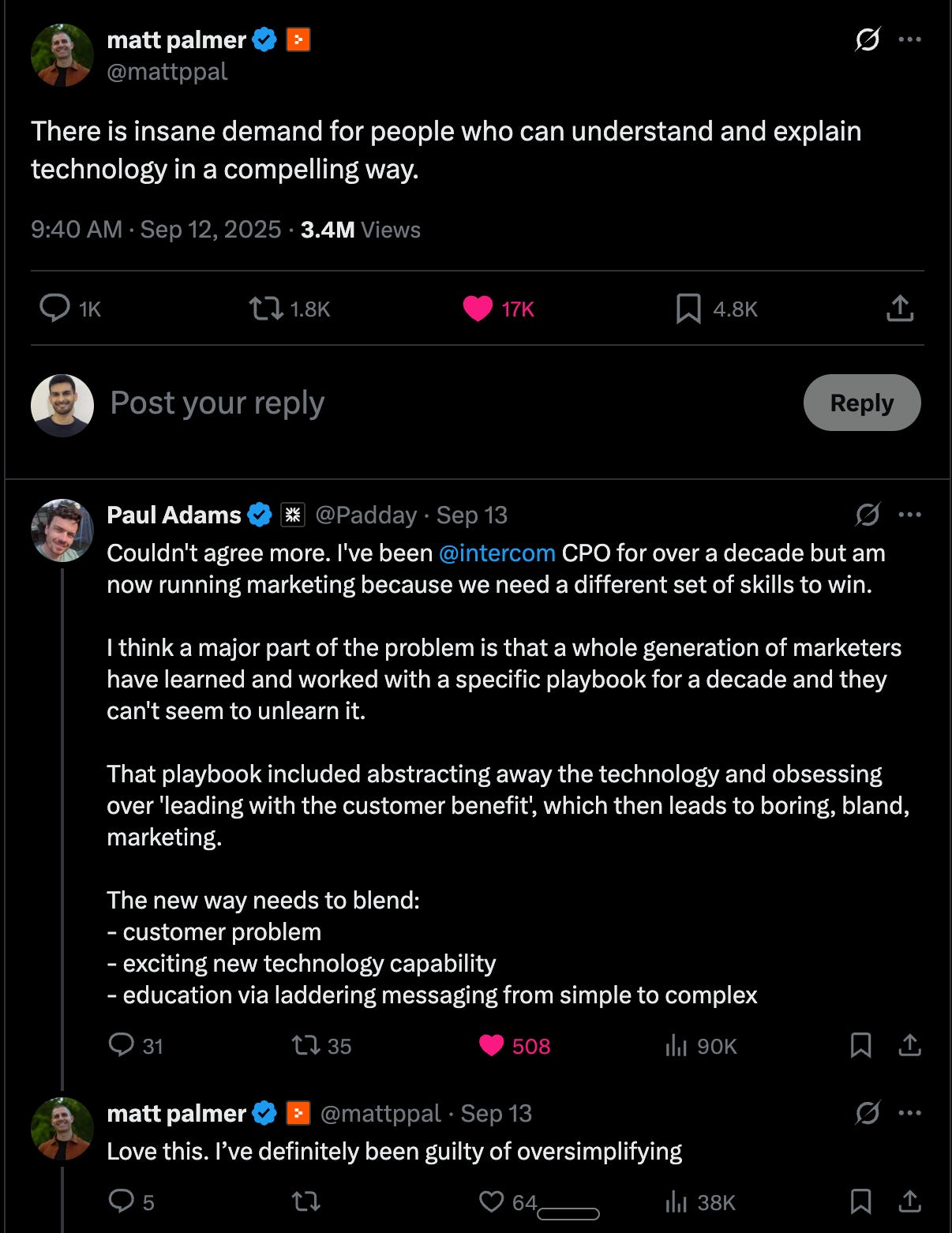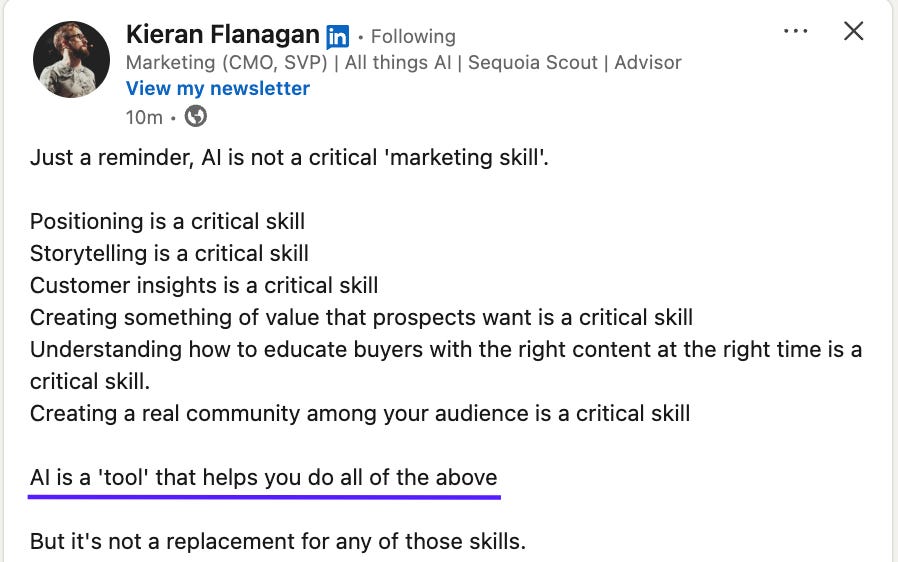How to become the marketer AI can't replace: build, ship, position
AI-first thinking + context trinity + ship hyper-specific stuff at scale = unfair advantage
I’ve been obsessing over this for last 2 years - watching the entire product marketing landscape split into two universes, and most marketers are still stuck with fixing grammar on homepage.
Kyle Poyar just called GTM in 2025 “a bit of a 🗑️🔥” - and he’s right. The tried-and-true channels don’t work like before. Emily Kramer is coining new terms like “Gen Marketers” for generalists who can orchestrate high-impact campaigns. And Kyle Coleman’s sharing Forrester data showing companies saving 92,400 hours (equivalent to 46 full-time employees) through proper AI workspace convergence.
But here’s what they’re all dancing around without saying directly: the fundamental restructuring isn’t just about AI tools or new GTM motions. It’s about marketers who can build vs marketers who can’t.
The way I see it - how do you essentially become a future-proof product marketer? How do you not just survive but dominate in this new world?
Here’s the thing most people don’t get: we’re not in one market anymore. We’re in two completely different universes, and each requires totally different skills.
Universe 1: Pre-2023 tools scrambling to add AI
These are your Notions, Intercom, Salesforce - basically every SaaS tool you used in 2022. They’re all freaking out, adding AI layers on top of existing products, acquiring AI companies, trying not to get disrupted.
The positioning nightmare: What do you do when your AI features might eat your core product? How do you price it? How do you message the evolution without confusing existing buyers who just learned your old positioning?
Examples of companies doing this pivot:
Notion repositioning around AI workspace intelligence
Salesforce is doing acquisitions and building AI story on agentforce.
Intercom evolving from chat to Fin AI
Where most PMMs fail: They don’t understand how AI actually works under the hood. So they can’t differentiate their AI implementation from competitors’. They end up with generic “AI-powered” messaging that means nothing.
What you need to master:
How to reposition without alienating existing buyers
Technical understanding of your AI implementation vs competitors
Pricing strategy when AI features might cannibalize core product revenue
Universe 2: Post-2023 AI-native tools built different
These are your Cursors, Clays, Replit - tools built AI-first. They’re not adding AI features. AI IS the product.
The technical depth requirement: If you’re marketing these tools and you can’t explain the technical differentiators, you literally cannot sell them. Period.
For dev tools, you need to go deep: example: If you’re at Supabase - how do people actually use it? What’s the database performance vs Firebase? How does authentication work differently?
Otherwise, you will say “unclear or less informed” stuff like these when you don’t the deep tech and haven’t had a Github profile yet. Know the ICP and the product. 👇
And please be on twitter if you want to learn about anything with AI. LinkedIn is at least 7 days to 3 months behind.
For AI tools, you need to understand product and engineering:
What “agentic” actually means (spoiler: it’s not just a chatbot)
Model layer differences and why they matter
Memory architecture and how it affects performance
Latency management in reasoning loops
Eval frameworks for systems that give different outputs each time
My simple product understanding workflow:
1. Use the product daily - build something real with it
2. Schedule engineering and product calls with 5-6 technical questions
3. Analyze Reddit/buyer calls for actual pain points
4. Run queries/workflows yourself to feel buyer pain
5. Check product analytics tool to see the user behaviorThe 6 shifts that will define marketers in 2026
Based on what I’m seeing across both universes, here are the 7 fundamental shifts that will separate the marketers who thrive from those who get replaced:
1. The death of demand generation (and what replaces it)
Here’s my controversial take: Demand gen as a role is dead.
Why? Because I can literally replace most demand gen work (grunt work and I have done it too: ) with Clay and some custom automation.
What demand gen used to do:
List building → Clay does this 100x faster
Email sequences → AI writes better copy using buyer call data
Lead scoring → Automated based on actual product usage data
ABM campaigns → Clay + custom workflows with Webflow handle this at scale
What’s actually valuable now:
Growth hacking - viral mechanics, creative experiments, influencer partnerships
Creative content - video, explainer demos for each usecase, gamification
Partnership playbook - community building, event experiences
Performance optimization - ads, conversion rates, funnel analysis
The evolution: The future marketing org has two core roles:
Product Marketer - Highest context person about product + market + buyers + quarterback of GTM
Growth Hacker - Creative experiments, viral content, influencer partnerships, fun campaigns
Good growth hack example of what AI-first stack is capable of:
Performance marketing at scale: Fyxer went from $1M to $17M ARR in 8 months using this exact playbook (source: Kyle Poyar’s Growth Unhinged):
200+ ads live at any given moment
100-150 new creative variations every two-week sprint
Powered by AI tools: ChatGPT, Claude, and custom automation
Key metric: cost-per-work-email (10x more valuable than personal emails)
Creative growth tactics (some examples) that actually work:
Firecrawl gamifying onboarding with credits (get credits for completing steps)
Dev tools creating toy store with messaging that resonates with buyers (wiz)
Companies sending branded doormats for ABM conversation starters (delve) and their page was built by lovable.
Tcosystem opportunity: Emily Kramer mentioned in her “Ecosystem Marketing” drive majority growth at startups - using 3rd parties like influencers, communities, channel partners, affiliates, integration partners, and buyers to piggyback off their reach and credibility.
The mindset shift: Think about how you can make your buyers feel like stars and show their work publicly. The idea of any tool is to help humans level up their lives - get better results, progress in their career, learn new skills.
As long as your buyers are having a great life because of your tool, you win.
Pick any of these 3 or hit me up on Twitter/LinkedIn with what you want next.
2. Speed is the new competitive advantage (but context sprawl is killing it)
So here’s what’s happening: The era of 6-month product launches is dead.
The underlying thing happening right now is that the notion of Tier 1, 2, 3, 4 launches is gone. Companies are shipping weekly now. Features that used to take months to bring to market are getting built and launched in weeks.
What I’m seeing: Companies that can’t adapt to this speed are getting left behind. Even HubSpot admitted “inbound alone won’t get you the same results.”
Here’s the actual bottleneck: If I tell you “Hey, we’re shipping this Tier 2 feature in 2 weeks, we’re launching broad market - you have 2 weeks to figure out positioning, messaging, and launch plan.”
Most PMMs would panic. They’re used to 3-6 month research cycles for launches.
The solution: You need systems for speed at every stage:
Analysis super fast - Understand market positioning in days, not weeks
Content creation super fast - Generate positioning and materials in hours
Distribution super fast - Push updates across all channels immediately
The bottleneck: You need a growth engine running in the background, freeing you to focus on finding market gaps. But you can’t find gaps without deep product and buyer analysis.
3. The full-stack product marketer revolution
Here’s what I’m seeing happen to marketing roles in real-time:
Traditional marketing silos are getting absorbed into one powerhouse role - the full-stack Product Marketer.
What the future product marketer owns:
End-to-End GTM Planning - From launch strategy to execution, working as the quarterback
Competitive Intelligence - Not hiring specialists, building automated systems + deep analysis
Customer Marketing - Handling success stories, case studies, buyer leaderboards directly
Sales Enablement - Creating battle cards, objection handling, deal-specific content
Content at Scale - Why hire a content marketer when you have the highest context about product + buyers + competitors? you can use existing tools to write programmatic SEO at scale. Use buyer calls to write blog content and LinkedIn posts for you. Like, all the blogs you see on this page is built on Cursor using public web data and reddit.
The core team structure I’m betting on with perfect balance of skills + taste:
Full-Stack Product Marketer - Highest context person, GTM quarterback
Growth Marketer - Creative experiments, viral stuff, performance optimization
Video Creator - Full-stack: recording, creation, editing, shipping
Brand Designer - Aesthetic differentiation, visual storytelling
Why this consolidation is inevitable: I can create “State of X” reports using buyer call data and public web scraping that’s higher quality than narrow specialists produce. I don’t need separate people for functions I can automate or handle myself.
It might sound harsh but: If you’re in a narrow in-house role (just competitive intelligence, just customer marketing), you’re going to face a hard time getting a job. The future belongs to PMMs with the highest amount of context - product knowledge + market intelligence + buyer psychology.
The difference between PMMs who thrive and those who get consolidated? Genuine curiosity about their craft. If you’re not obsessively diving deep into product architecture, buyer psychology, and market dynamics because you love it - you’re already behind.
4. Show real buyer wins (not fancy demos)
The perfect era for builder stories: Since everybody is becoming a builder, let those stories come out in the market.
Your buyer is the biggest way to win right now because most companies are creating fancy websites and demo interactive stuff that fails in production.
The shift: From demo-driven to product-led marketing.
What works:
Show something that works in prod that somebody actually built
Customer video stories: Real builders showing what they built
In-production examples: Actual implementations, not demos
Metric transparency: Real accuracy numbers, actual latency, honest limitations
Why this works: In the builder era, people want to see real examples of what’s possible. Your buyers become your best marketing when they can show off what they built.
Video and brand design will shine: You’ll work closely with video teams and brand design because brand recall matters more when everyone looks similar. You need your own style, your own narrative to differentiate from competitors. And the recent Sora 2 launched killed it.
Use the builder era: Customers want to show off what they built with your tool. This is your biggest marketing advantage:
Feature buyers on leaderboards with real recognition
Create industry-specific top performer charts
Do showcase series featuring customer builds
Flood social with customer videos showing actual implementations
5. Why marketers who can code will dominate
Here’s why I push for marketers who understand code:
You know the actual tech behind the tech product you’re selling. You need to feel that pain. If you can’t feel that pain, you can’t sell that product.
The AI era reality check: As I wrote in my previous newsletter about product positioning in the AI world - we’re in the instant gratification era. The TikTok-ification of B2B is real. People want to swipe, not schedule. They want to create images NOW. Build apps NOW. Generate code NOW.
The new reality:
Old way: Homepage → Features list → “Book a demo” → Discovery call → POC → Legal review → Maybe buy in Q3
New way: Homepage → Try it RIGHT NOW → Holy shit this works → Swipe credit card → Tell team on Slack
Why technical PMMs win this game: Marketers who can code will shine because they can:
Build something customized for themselves using the product they are selling (feel the actual product pain, which means contextual positioning)
Ship launches super fast using AI (match the pace of weekly product releases)
Do things at scale by default (their natural builder instinct kicks in)
Create the sandbox/playground experiences that buyers now expect
The AI-first rule: Scale + hyper-specific
The mindset shift: Change your thinking to AI-first, which means starting every marketing decision with: “How can I make this hyper-specific to individuals while doing it at massive scale?”
This is the unique power of AI that traditional marketing can’t match - super specific + massive scale without jeopardizing quality.
How to actually get there:
Start with one fun personal project using fun app building stuff like Lovable, Replit and if you are good enough then move to AI coding assistants like Cursor. You’ll fail for first 5 times, but nail it by the 6th time. Then pick your most annoying manual task and automate it - don’t ask permission, just build “ugly but working” solutions. v1 should embarrass you a bit.
Scale from there to: buyer call analysis → content generation → competitive monitoring → hyper-specific landing pages → custom outreach automation.
Your complete PMM tech stack
Essential tools for builder marketers:
Advanced automations in action:
Customer Analysis → Landing Pages: here is my Clay setup for ABM which you can clone
Competitive Intel: here is my github public repo and the video of how to use it. if you have replit/claude code/cursor - you can upload the code there and run it directly once you add the openai key locally in your system.
Content Generation: here is my playbook that I created for writing these newsletters, reddit posts, linkedin posts, twitter posts, all using my thinking to industry insights flow.
6. Why technical depth is everything now
So here’s what’s going down: Kyle Poyar’s research shows monetization is shifting from charging for access to charging for work delivered. When buyers can test your product in 30 seconds and compare it to $25/month AI tools, surface-level marketing collapses.
Founders are noticing: “Very few product marketers understand the tech they’re selling”. There’s a massive shortage of PMMs who combine technical depth + marketing skills.
Generic vs. technical marketing:
❌ Generic: “AI-powered solution that streamlines sales workflows”
✅ Technical: Accuracy, benchmarks, latency numbers, model layers, product led proof from customer stories, public sandbox
❌ Generic: “Let’s start with benefits, not features”
✅ Technical: “Here’s deployment differences vs Netlify, database performance vs Firebase”
The PMM-engineering alignment framework:
1. Buyer-product fit:“This is buyer feedback - why is this feature important?”
2. Technical differentiation:“What’s our actual technical difference vs [competitor] that buyers care about?”
3. Positioning truth:“What’s the hardest technical problem we solved that competitors haven’t figured out?”
4. Proof points:“What technical metrics can we show publicly? (benchmarks, speed, accuracy, uptime)”
5. Buyer education:“How should we explain our technical approach to buyers who need to justify this purchase?”
6. Reality check:“Where are we technically behind competitors, and how do we position around that honestly?”
The context trinity: Your unfair advantage
Without all three contexts, you can’t do effective product marketing:
Product context: Use daily, understand technical architecture, know limitations, set up engineering/product calls asking “How should we explain our technical approach to buyers who need to justify this purchase?”
Competitor context: Track competitor moves (positioning, pricing, team hires, features), spot ecosystem gaps, find out shift in buyer behaviour
Buyer context: Analyze buyer calls for actual language used, understand decision processes (who influences/decides/implements), know technical/product objections for deal closures
Your action plan: Start now
My bet: Product Marketing + Growth skills = 🦄 . Without deep product context, nobody will hire you for senior marketing roles.
Don’t try to boil the ocean. Pick one manual task, automate it this week. Build on that success.
The goal: hyper-specific execution at massive scale. I have a couple of examples that I have already added about things that I have built. You may be able to use some examples from there, or you can start small by doing some automation for yourself.
Forward this to PMMs who are figuring out or are curious to figure out how to be ready for AI.
p.s. please answer the poll and thank you to all 100 subscribers. big milestone! 🙏💜
p.p.s. here is the waitlist form if you want to try www.qback.ai



